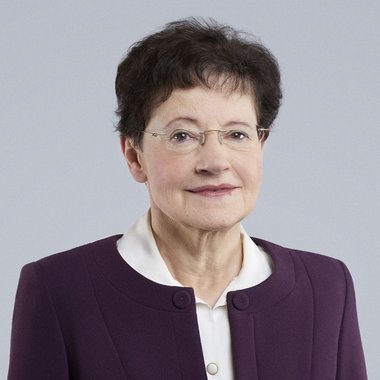Françoise Combes: Understanding how Galaxies Form

Astrophysics - Laureate for Europe
Professor Françoise Combes is awarded for her groundbreaking contribution to astrophysics, and in particular, the critical role she has played in informing our understanding of how stars and galaxies form and evolve. Her pioneering discoveries in galactic dynamics range from identifying numerous molecules in interstellar space to decoding the precise stages of galactic evolution – all the way back to the Big Bang.
Her beginnings in AstrophysicsProf. Combes first realized the incredible impact of scientific research for human life as a teenager, and knew she wanted to play a part in future discoveries. She marveled at Nicolas Copernic’s ‘controversial’ hypothesis that the Earth was not, in fact, at the center of the universe, and Louis Pasteur’s revolutionary medical breakthroughs. Encouraged by her physics teacher at school, she pursued physics and later astrophysics and cosmology at university, where she was fortunate to learn from the dynamic and visionary Professor Evry Schatzman.
A groundbreaking scientific career
During her early career, Prof. Combes made her name by discovering carbon monoxide molecules in the Andromeda galaxy, some 2.2 million light years from the Earth. She is notably leading research on an amino acid, glycine, molecular oxygen and water in very distant galaxies, in order to detect possible signs of life. Her research has also been instrumental in demonstrating that supermassive black holes at galactic centers slow the formation of stars within them.
As an astrophysicist in France, Prof. Combes has benefitted from Europe’s comprehensive research and access to sophisticated telescopes, such as ESO’s large optical telescopes in Chile, or the millimeter-wave telescopes developed by NOEMA and ALMA. Together with telescopes in space, these ground-level instruments have provided her with a wealth of data for comparison with ever more advanced computer simulations.
And her decisive research has delivered great value, winning her both national and international accolades. She has been a member of the French Academy of Sciences since 2004 and counts among her numerous prizes the CNRS Gold Medal (French National Center for Scientific Research), one of France’s most prestigious scientific distinctions.
“In fundamental astrophysics, our research helps to increase humanity’s knowledge of the universe, better understand our origins and consider the potential existence of other life forms. The scientific community is leveraging imaginative models to pursue many unsolved puzzles, such as the existence of dark matter and dark energy – and the answers will certainly change the fundamental laws of the universe.”
The place of women in the scientific field
On her journey to becoming a senior woman scientist, Professor Combes faced challenges in balancing her many research, teaching and family responsibilities, particularly when travelling to conduct observations from foreign telescopes. The “long and uncertain path” after PhD is also cited by Professor Combes as a barrier for women’s progression in science. In those initial precarious years of her career, it was 14 years before she obtained her first permanent position at the Paris Observatory, a journey requiring immense fortitude and perseverance.
“Women scientists have so much to offer – they bring diversity and originality to a laboratory, and a practical, results-oriented approach.”
Encouraging more women to enter science starts with overturning societal stereotypes and prejudices, with girls, in particular, and boys encouraged to understand that they can do anything they want, she believes.